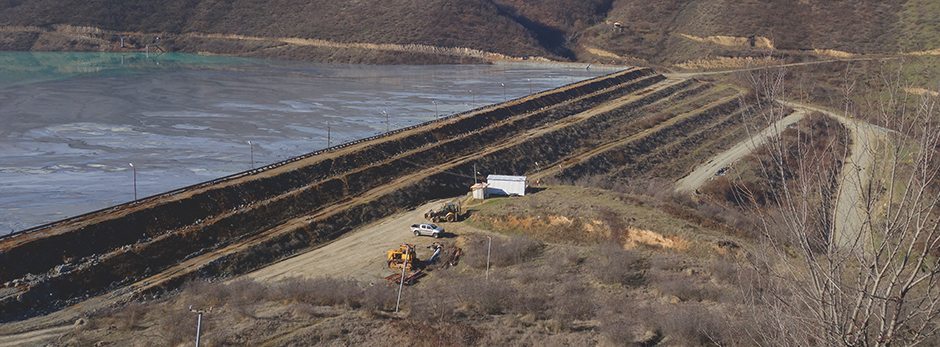Following catastrophic failures at Brumadinho (Brazil; 2019), Mariana (Brazil; 2015) and Mount Polley (Canada; 2014), there has been an ever-increasing focus on Tailings Storage Facility (TSF) safety, both within the mining industry and by the wider public.
Because the human, environmental, and business-continuity consequences of failure are so significant, miners and other stakeholders want to know ‘is the TSF safe?’ and are turning to consultants and other experts to request an answer on this seemingly simple question.
Assessing the safety and security of operational TSF is a significant proportion of our workload in the SRK UK Mine Waste Management team. In alignment with our colleagues from other practices, these investigations are undertaken in a staged manner, typically in general accordance with the approach for Dam Safety and Operational Reviews (DSOR) as recommended by the following parties:
1. The Association of Professional Engineers and Geoscientists of British Columbia (APEGBC); who published guidelines on Legislated Dam Safety Reviews in British Colombia (2016) [1]; and
2. Canadian Dam Association (CDA); who published a technical bulletin on Dam Safety Reviews (2016)[2].
Collectively, the APEGBC and CDA guidance is representative of current ”best practice” for undertaking a DSOR, but it is recognised that there is also other useful guidance published by other international, national, and regional Industry Associations.
Adhering to ‘’best practice’’ means that we do not undertake mandates which are in themselves a risk, such as a quick site visit followed by an assurance of TSF safety, or such as a multi-asset assessment where the scope and schedule do not allow for even the minimum level of scrutiny required to justify an opinion on TSF risk.
The minimum form of DSOR is an “Audit Type” Dam Safety Review. The DSOR Audit focuses on understanding the key issues pertaining to the facility in question and identifying any “Red Flags” that may exist with the design, the operation of the facility, and any other internal or external factors that could indicate that there is a potential stability, security, or safety issue (including monitoring/performance data). Essentially, this is preliminary review of ”credible risk”.
If the Audit reveals that there are (or potentially are) significant issues with the facility, we would then recommend carrying out a more detailed ”full DSOR”, which is a significantly more comprehensive and extensive review that would include additional analysis to quantify risks, and that may necessitate additional investigations, data acquisition, and technical analysis (ground investigations and laboratory testing, followed by updated numerical modelling to consider potential modes/mechanisms of failure).
A typical DSOR Audit undertaken on a TSF will include: 1) a site inspection undertaken by an experienced professional engineer; 2) a preliminary review of relevant design and operational management documentation (including emergency action/preparedness plans); 3) a review of critical performance monitoring data and the findings/outcomes of previous audits/inspections/surveys; and 4) qualitative assessment to provide justified opinion on credibility of potential failure modes and on TSF safety/security.
A challenge we face is undertaking Audits in locations where the local tailings engineering norms do not align with international ”Best Practice”. On several occasions our Audits have raised concerns for safety/security on an asset recently signed off as ”acceptable ” in accordance with local requirements. In these circumstances we have found that by adopting the APEGBC and CDA recommended approach, our Audit findings and recommendations are backed-up with evidence, and with reference to precedence, which makes them easier to explain to the Clients.


